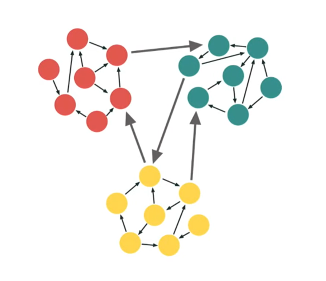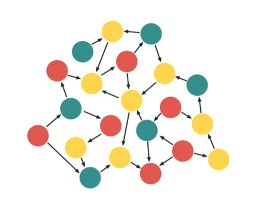Technical Debt: Unpacking the Software Quality Challenge
In the realm of software development, there’s an invisible force that can significantly impact your projects and their long-term success - technical debt. In this comprehensive exploration, we will delve into the heart of technical debt, understanding its origins, its various manifestations, and how to effectively manage it.
Unraveling Technical Debt
To put it simply, technical debt is the cost your project incurs when you prioritize short-term gains over long-term stability. It’s like taking out a loan to buy a house - immediate gratification at the expense of future commitments.
As defined by Wikipedia, technical debt is “the implied cost of additional rework caused by choosing an easy, limited solution now instead of using a better approach that would take longer”. It’s akin to borrowing from the future to expedite development today.
The inevitable truth is that, just as the second law of thermodynamics posits that entropy in the universe increases over time, the code tends to deteriorate and gradually transforms into legacy code. In most cases, the original engineers have moved on, leaving a knowledge gap in their wake.
This situation is akin to having a mortgage on a house; you must pay your technical debt promptly. Failure to do so can result in an accumulation of debt that has the potential to disrupt your project’s long-term health.
Identifying the Culprit
Technical debt can manifest in various aspects of your project:
- Architecture Debt: When architectural decisions lead to complexities and inefficiencies.
- Code Debt: Poorly written code with limited documentation and deviation from coding standards.
- Design Debt: When system design becomes convoluted and challenging to maintain.
- Test Debt: Inadequate or outdated testing practices.
For the sake of this article, we’ll focus on Code Debt and Design Debt, as they often take the forefront in daily development challenges.
Classifying Technical Debt
Technical debt isn’t a monolithic entity. It can be reasonable or reckless, known or unknown. How does technical debt sneak up on you? It often occurs when you choose to switch from one library or framework to another, accruing debts you may not even be aware of. Over time, this can lead to a loss of trust from management, which may deprioritize addressing technical debt.
Hence, it’s helpful to reframe “known and unknown” technical debt as “manageable and unmanageable” debt, akin to the Eisenhower Principle:
- Unreasonable and manageable
- Reasonable and manageable
- Reasonable and unmanageable
- Unreasonable and unmanageable
Tackling Technical Debt
The first rule in managing technical debt is that it’s not a battle to win. It’s an ongoing process, and a well-executed plan can make all the difference. Here’s a systematic approach:
1. Identification
Subjective Evaluation
Engage your development team in a discussion. Identify pain points, bottlenecks, and productivity-impeding issues.
Automated Analysis
Leverage static code analysis tools to objectively assess code quality. These tools detect code style violations, anti-patterns, code smells, and potential issues. Examples include SonarQube, DeepSource, Semgrep, etc.
Ideally, adhering to SOLID and GRASP principles ensures high cohesion between modules and low coupling between dependencies. This results in a clean and maintainable codebase. 
Conversely, ignoring these principles leads to a tangled, hard-to-maintain codebase. 
In the realm of software development, it’s imperative to grasp the concepts of coupling and cohesion. These fundamental principles serve as the foundation of code organization and quality. Coupling assesses how one module relies on another, indicating the level of interdependence between components. In contrast, cohesion evaluates how well the functions within a module collaborate to achieve a singular, well-defined task.
Striving for high cohesion and low coupling is akin to the holy grail of software development. It results in a codebase that’s not only clean but also highly maintainable. This harmonious balance is what developers aspire to achieve, as it leads to code that is resilient, adaptable, and easy to maintain throughout its lifecycle.
2. Estimation
Gather metrics to assess the extent of technical debt. Analyze code complexity (e.g., cyclomatic and cognitive complexity), code churn (files with the most commits), and modules with the highest dependencies. Take into account factors like file size (measured in lines of code) and test coverage. Don’t forget to examine the prevalence of TODOs and deprecated comments in the codebase.
To delve further into this topic and explore metrics for Object-Oriented codebases, refer to Chidamber & Kemerer object-oriented metrics suite.
3. Decision-Making
The next strategic step involves deciding whether to address and mitigate the technical debt. This decision hinges on risk mitigation and focuses on resolving the most critical issues, adhering to the Pareto principle, SWOT analysis, or other prioritization frameworks.
4. Proactive Planning
Not all technical debts are equal in complexity and impact. While some issues can be resolved quickly, others, like migrating between frameworks or technologies, may require significant time and resources. It’s crucial to ensure that tackling technical debt aligns with your project’s goals and promises tangible benefits to the team and the business.
5. Taking Action
Once you’ve laid out the plan, it’s time to implement it. Break down the tasks into manageable steps and iteratively work on addressing the identified technical debt.
6. Retrospection and Observation
Finally, it’s essential to look back and evaluate the results of your technical debt resolution efforts. Metrics help to control the clarity and the trust to your code base. Retrospection allows you to understand what was before and after technical debt mitigation. This understanding helps you make informed decisions and measure the impact on your software, team, and business. It’s a journey towards making your technical debt clear, understandable, and manageable.

